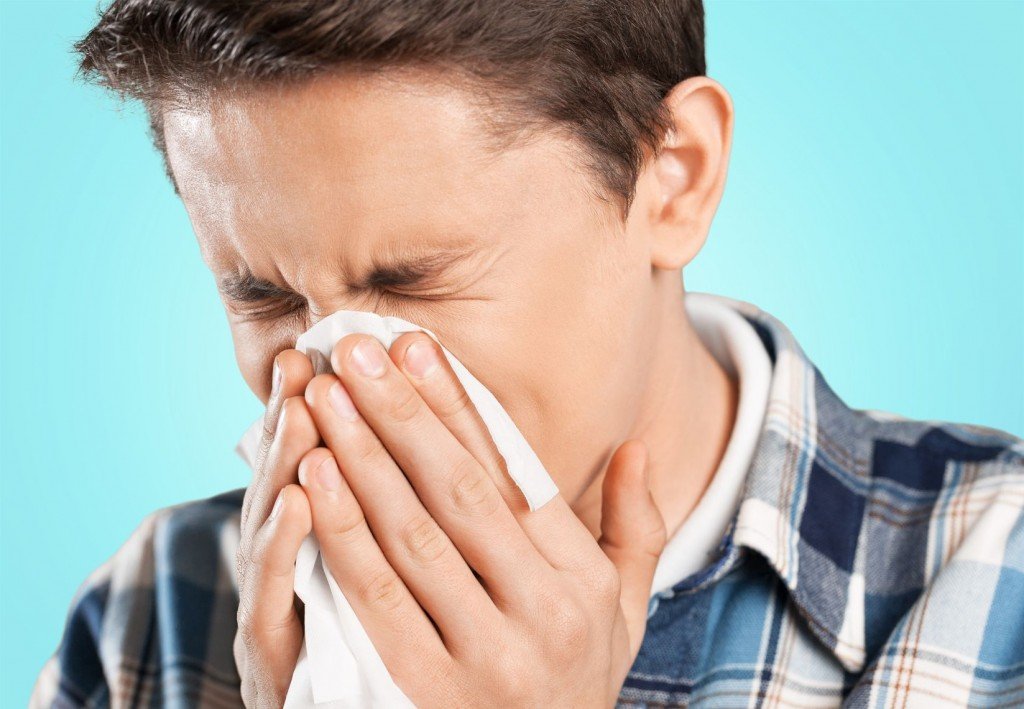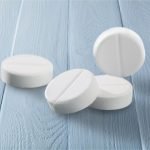Robin DiPasquale, ND, RH (AHG)
As spring approaches, the so-called seasonal allergies and hay fever arrive, accompanied by symptoms of nasal congestion, prolific mucous secretions, itchy eyes, sneezing, and a scratchy or sore throat. To treat this yearly cyclic challenge, the symptoms can be addressed with anticatarrhal, anti-inflammatory, antihistamine, and expectorant remedies. Many people reach for over-the-counter allergy medications, which can be effective in relieving symptoms but may often result in adverse effects. Herbal remedies can offer a more supportive option, eliminating symptoms, yielding fewer adverse effects, and bringing overall tonifying effects to the whole body. When taken as a simple or in formula, these top allergy herbs can enhance the quality of daily life for those experiencing seasonal allergies or hay fever. It is recommended to begin herbal treatment for seasonal allergies 6 weeks before the season begins, continuing treatment throughout the entire season. Some of the primary herbal choices to treat allergy symptoms are discussed herein; however, going beyond these herbal allies can lead to deeper and more long-term resolution.
Solidago species (Goldenrod)
Solidago species (goldenrod)are thought by many to be a cause of seasonal allergies. This Asteraceae family plant, with its heavy and sticky pollen, is insect pollinated, unlike its neighbor Ambrosia species (ragweed), which is wind pollinated, blooms at the same time, and is a major cause of hay fever symptoms. Solidago has anticatarrhal, analgesic, and inflammation-modulating actions. It is effectively dosed as a tea (1 tablespoon per cup, steeped covered for 15-30 minutes), consuming 1 cup every 3 hours for acute symptoms and 2 to 3 cups daily for chronic symptoms. As a tincture, the dosing is 3 to 5 mL every 3 hours for acute symptoms or 2 to 3 doses daily for chronic symptoms. The diterpene constituent solidagerone and its derivatives were shown in a study1 to be gastroprotective, tying the use of Solidago for allergy symptoms back to treating the gastrointestinal tract.
Euphrasia officinalis (Eyebright)
The Eclectic physicians wrote of a specific use for Euphrasia officinalis (eyebright). Felter2 describes the use of this herb for acute catarrhal diseases of the eyes, nose, and ears and to treat fluent coryza with copious discharge of watery mucus. In the homeopathic literature, E officinalis has the keynotes of the following: catarrhal conjunctivitis, discharge of acrid matter, the eyes water all the time with acrid lachrymation, and bland coryza.3 This plant is high in the iridoid glycoside aucubin, also found in Plantago species, which has the anticatarrhal and antimicrobial actions. The flavonoids, specifically quercetin and apigenin, contribute to decreasing discharge from mucous membranes, specifically nasal and lacrimal. In addition to reducing the profuse watery nasal discharge, Euphrasia can stop sneezing, decrease middle ear fullness, and ease sore throats. The past medical literature made mention of the allergy-gut connection. In 1898, Felter and Lloyd4 wrote that Euphrasia can be used to treat catarrhal diseases of the intestinal tract. However, Felter2 countered this in 1922 by stating that it is less valuable in the catarrhal disorders of the gastrointestinal tract.
Ephedra sinica (Ma Huang)
Ephedra sinica (ma huang), with its alkaloids ephedrine and pseudoephedrine, affects the autonomic nervous system. Isolated alkaloids of ephedrine stimulate the sympathetic branch, leading to unwanted adverse effects. Because of misuse, Ephedra has been banned from use in the United States. As a whole-plant extract, including both ephedrine and pseudoephedrine alkaloids, and given in appropriate dosage, Ephedra can be effective as part of a formula for the treatment of nasal congestion, sinusitis, bronchitis, and asthma. Small doses, 5% to 10% of a formula, will help diminish excessive mucous secretion, dilate the bronchi, and decrease smooth muscle spasm, relaxing tense tissue throughout the respiratory system. Ephedra should be used with caution and with awareness of the potential interactions, as well as the contraindications. Study this remedy in depth before using it, and consider the reference by the Tillotson Institute of Natural Health.5
Albizzia lebbeck (Siris Tree)
Called shirish in Ayurvedic Medicine, Albizzia lebbeck (siris tree) is a Fabaceae family plant, related to the mimosa tree, that has astringent and inflammation-modulating activity.6 The antiallergic properties of Albizzia come primarily from its ability to stabilize mast cells, diminishing histamine activity. In addition, the levels of allergy-inducing antibodies were shown to be depressed with Albizzia, and T-lymphocyte activity and possibly B-lymphocyte activity were decreased.7 Although less known in Western herbal medicine, the tea or tincture of Albizzia bark can be an integral part of any seasonal allergy formula.
Urtica dioica (Nettle Leaf)
Although Parietaria diffusa (pellitory of the wall) is one of the chief instigators of seasonal allergy, its Urticaceae family member Urtica dioica (nettle leaf) (or Urtica urens, a European cousin) is one of the most used herbal remedies to abate symptoms of seasonal allergies. According to some, the freeze-dried leaf shows increased efficacy for the antihistamine activity. Investigators have evaluated the effect of Urtica on allergic rhinitis. In a double-blind, randomized, placebo-controlled study,8 a group of 69 volunteers received freeze-dried nettle leaf (600 mg) at the onset of allergic rhinitis symptoms and continued its use for 1 week. Nettle was rated higher than placebo in the ability to abate symptoms of allergic rhinitis. Taking nettles, fresh or dry, as an infusion, tincture, or capsule has also been shown to abate seasonal allergy symptoms. In a trial at the Bastyr University (Kenmore, Washington) herb laboratory, students blindly sampled extracts from fresh vs dry nettles in short (20 minutes) and long (8 hour) infusions (R. D., unpublished data, 2007). The fresh short infusion was preferred for taste, followed by the fresh long infusion. This trial did not test for efficacy to alleviate symptoms of seasonal allergies. However, the findings indicated that compliance may be increased when regularly dosing the infusion from the fresh plant instead of the dry plant. Nettle plants begin to show themselves in early spring, often before the pollens of seasonal allergies begin to fly. Harvesting the young plants, steeping them in a tea, or ingesting the greens as a vegetable has been used traditionally in herbal history as a spring tonic to cleanse the system of accumulations from the long winter. This spring cleansing, moving the blood and ingesting the high amounts of vitamins and minerals contained in nettle leaf, can support a more optimally functioning immune system, which in itself could diminish allergic reactions.
Scutellaria baicalensis (Baikal Scullcap)
In Traditional Chinese Medicine, Scutellaria baicalensis (Baikal scullcap) is said to clear heat and to dry dampness,9 which is exactly what is in excess during times of seasonal allergies. Baikal scullcap contains the flavone baicalein, which is similar in structure to quercetin. It acts as an anti-inflammatory agent through inhibition of lipoxygenase, cyclooxygenase, prostaglandins, and leukotrienes.10 When using S baicalensis to treat allergy symptoms, administer short-term larger doses for acute conditions and smaller doses for long-term administration.
Other Inflammation-Modulating Plants
Curcuma longa (turmeric), Boswellia serrata (frankincense), and Zingiber officinale (ginger) offer inflammation-modulating action. Curcuma tends to be more cooling, while Boswellia and Zingiber are more warming.
Infusions of many plants in the Lamiaceae family can be consumed as daily beverages leading up to and continuing throughout the allergy season. Mentha, Thymus, Melissa, Rosmarinus, Salvia, Prunella, and Ocimum contain rosmarinic acid, which dries up secretions, is antispasmodic, and modulates inflammation. A tea of Ocimum sanctum (holy basil) will provide needed adrenal gland support for the stress that allergy reactions have on the body. Therapeutic dosing of herbal infusions is 1 tablespoon per cup of water (steeped covered for 15 minutes), drunk hot or cool.
Hippophae rhamnoides (Sea-Buckthorn)
The bright orange color of Hippophae rhamnoides (sea-buckthorn) heralds its high levels of antioxidant flavonoids. It is high in vitamin C, which is always helpful to stabilize mast cells in allergy conditions. According to the US Department of Agriculture’s National Nutrient Database (http://ndb.nal.usda.gov), buckthorn berries contain 15 times the vitamin C of oranges. Ninety percent of the world’s buckthorn berries are grown in China. Hippophae can be included among the high-antioxidant superfruits, along with açai, goji, noni, and mangosteen. All these fruits score significantly high on the Oxygen Radical Absorbance Capacity Scale.
Homeopathic Desensitization
In addition to the use of herbal therapies, allergies can be treated with homeopathic desensitization using the homeopathic preparation of the triggering antigen. Optimal success is achieved when dosing both before and during the blooming of seasonal allergens such as tree pollens, grass pollens, and so forth. For dust, molds, animal dander, and other common allergens, establishing a cyclic dosing schedule can be most beneficial. It was reported in the April 2009 issue of NDNR11 that the Miller method can be successfully applied for desensitizing reactions to inhalant allergies and that a homeopathic variation of this process was shown to be clinically reliable for food and chemical sensitivities.
Treat the Cause—Go to the Gut
Treating seasonal allergies with the aforelisted herbal therapeutics will bring relief of symptoms. However, it would serve practitioners and patients well to apply the naturopathic principle of tolle causam (treat the cause) and to consider the function of the gastrointestinal tract.
Food sensitivities and intolerances can result in inflammation along the gut mucosa, initiating the process of leaky gut. Once the gap junctions are established, substances from the gut can pass through, arriving into the bloodstream, where the immune system will create antibodies against these substances. The type or degree of reaction may be dependent on genetic predisposition and blood type. These antibody-antigen complexes will then circulate through the body, being deposited at various target organs, interrupting function. This overactivity of the immune system, and its subsequent altering of function, places a tremendous burden on the entire physiological system. Already heavily burdened, when seasonal allergy antigens or other environmental allergens call forth an immune response, the overall body burden can result in a more extreme or more prolonged expression of symptoms.
Identification of food sensitivities and intolerances, and removal from the diet, can lift the overall body burden. In addition, there are some key objectives when repairing damaged gut mucosa and bringing about more effective function. These include soothing mucous membranes and quieting the inflammatory process directly in the gut.
The use of mucilaginous herbs, taken between meals, will bring coolness and moisture (yin qualities) to quiet the fire of digestive inflammation. Some herbs to consider are Althaea officinalis (marshmallow), Ulmus fulva (slippery elm), Glycyrrhiza glabra (licorice), Opuntia ficus subsp indica (prickly pear cactus), Abelmoschus esculentus (okra), and Aloe vera (aloe). Filipendula ulmaria (meadowsweet) protects and soothes the mucous membranes, while its astringent action tonifies tissue. The resinous compounds and flavonoids of Calendula officinalis (calendula) act to modify inflammation and work as a vulnerary on damaged gut mucosa.
Herbs such as Phellodendron amurense (Phellodendron bark), S baicalensis (Baikal scullcap), B serrata (frankincense), and C longa (turmeric) bring their unique inflammation-modulating activity to the healing of the gut mucosa by clearing heat and by drying damp.12 Phellodendron contains berberine alkaloids, which are bitter and cold. Other berberine alkaloid plants, including Hydrasits canadensis (goldenseal), have been used throughout history to heal mucous membranes of the digestive tract.
A significant percentage of immune function is centered in the digestive tract. Herbs that modulate an overactive or underactive immune system can be included in formulas for gut healing. A few top choices may be Andrographis paniculata (India echinacea), Echinacea species (coneflower), Picrorrhiza kurroa, Spilanthes acmella (toothache plant), Uncaria tomentosa (cat’s claw), and mushrooms such as reishi, shiitaki, and maitake.
The balancing of gut flora could be the topic an entire article because it is so vast and complex. From my clinical experience, I prefer to work with the human microflora Lactobacillus acidophilus and Bifidobacterium bifidum over the many other species of Lactobacillus and Bifidobacterium gut bacteria available. When indicated (often in the case of small intestine bacterial overgrowth), Sacromyces boulardii can be effective. I do not generally work with these organisms combined because I find that patients test more strongly for L acidophilus or B bifidum or for S boulardii, but not both together.
Stimulating the flow of bile from the liver and gallbladder can support optimal gut flora through effective breakdown of fats and fatty acids. Subclinical cholestasis has been identified in patients with inflammatory bowel disease.13
Stress can have a significant role in the diminishment of optimal digestive function, in decreased immune function, in the development of dysbiosis, and subsequently in the accumulation of seasonal allergy responses. Facilitating parasympathetic nervous system response when the body is presented with food, as well as diminishing overall sympathetic dominance, allows the digestive system to secrete digestive enzymes, digest and absorb nutrients, and eliminate waste products. Ficus carica, the gemmotherapy extract from the fig tree, works in this way by disconnecting the sympathetic dominant central nervous system messages being fired down to the enteric nervous system. The trophorestorative nervines Avena sative (oats) and Scutellaria officinalis (scullcap), taken as a long infusion (1-2 cups daily), will supply minerals and a calming influence over the nervous system. Inclusion of adrenal support from among the many adaptogenic herbs in our materia medica can assist in modulating the effects of stress on the entire body, including the gastrointestinal tract.
Gut repair includes rebuilding the gut mucosa and closing the gap junctions. Two amino acids that serve as food for the cells lining the small intestine are glutamine and N-acetylglucosamine. While these are available alone or in combination with gut-healing herbs, I find that the timing of dosing these amino acids, or derivatives, within the healing process of gut inflammation has to be chosen carefully. From my clinical observations, I do not see the use of l-glutamine as strongly indicated until the gut healing is further along in its process. However, patients’ needs vary, so be sure to evaluate this as part of the protocol.
In Conclusion
When patients with seasonal allergies or hay fever are seen in your office, be competent in assisting them with the relief of symptoms. An herbal formula containing Solidago, Euphrasia, S baicalensis, a little Ephedra, and perhaps Zingiber or Armoracia rusticana can be effective. Quercetin and quercetin nasal spray can be important in tonifying the mucous membranes, preventing them from leaking. Freeze-dried Urtica capsules, repeated every 2 hours in acute symptom expression, along with vitamin C, will stabilize histamine release. Naturopathic medicine has many tools to help with symptoms of seasonal allergies. Most important, look deeper to the cause, and treat the gut.
 Robin DiPasquale, ND, RH (AHG) earned her degree in naturopathic medicine from Bastyr University in 1995 where, following graduation she became a member of the didactic and clinical faculty. For the past eight years she has served at Bastyr as department chair of botanical medicine, teaching and administering to both the naturopathic program and the bachelor of science in herbal sciences program. Dr. DiPasquale is a clinical associate professor in the department of biobehavioral nursing and health systems at the University of Washington in the CAM certificate program. She loves plants, is published nationally and internationally, and teaches throughout the U.S. and in Italy on plant medicine. She is an anusara-influenced yoga instructor, teaching the flow of yoga from the heart. She currently has a general naturopathic medical practice in Madison, Wis., and is working with the University of Wisconsin Integrative Medicine Clinic as an ND consultant.
Robin DiPasquale, ND, RH (AHG) earned her degree in naturopathic medicine from Bastyr University in 1995 where, following graduation she became a member of the didactic and clinical faculty. For the past eight years she has served at Bastyr as department chair of botanical medicine, teaching and administering to both the naturopathic program and the bachelor of science in herbal sciences program. Dr. DiPasquale is a clinical associate professor in the department of biobehavioral nursing and health systems at the University of Washington in the CAM certificate program. She loves plants, is published nationally and internationally, and teaches throughout the U.S. and in Italy on plant medicine. She is an anusara-influenced yoga instructor, teaching the flow of yoga from the heart. She currently has a general naturopathic medical practice in Madison, Wis., and is working with the University of Wisconsin Integrative Medicine Clinic as an ND consultant.
References
- Schmeda-Hirschmann G, Rodriguez J, Astudillo L. Gastroprotective activity of the diterpene solidagerone and its derivatives on experimentally induced gastric lesions in mice. J Ethnopharmacol. 2002;81(1):111-115.
- Felter HW. The Eclectic Materia Medica: Pharmacology and Therapeutics. Sandy, OR: Eclectic Medical Publications; 1994 (first published in 1922 in Cincinnati, OH).
- Boericke W. Pocket Manual of Homeopathic Materia Medica. 9th ed. Philadelphia, PA: Boericke & Runyon, Boericke & Tafel Inc; 1927.
- Felter HW, Lloyd JU. King’s American Dispensatory. 18th ed. Sandy, OR: Eclectic Medical Publications; 1983 (third revision published in 1898).
- Tillotson Institute of Natural Health. Ephedra (Ephedra sinica). http://oneearthherbs.squarespace.com/important-herbs/ephedra-ephedra-sinica.html
- Mishra SS, Gothecha VK, Sharma A. Albizzia lebbeck: a short review. J Herbal Med Toxicol. 2010;4(2):9-15.
- Tripathi RM, Sen PC, Das PK. Studies on the mechanism of action of Albizzia lebbeck, an Indian indigenous drug used in the treatment of atopic allergy. J Ethnopharmacol. 1979;1(4):385-396.
- Mittman P. Randomized, double-blind study of freeze-dried Urtica dioica in the treatment of allergic rhinitis. Planta Med. 1990;56(1):44-47.
- Bensky D, Gamble A. Chinese Herbal Medicine Materia Medica. Seattle, WA: Eastland Press; 1986.
- Li BQ, Fu T, Gong WH, et al. The flavonoid baicalin exhibits anti-inflammatory activity by binding to chemokines. Immunopharmacology. 2000;49(3):295-306.
- McKinney N. Desensitizing allergies with the Miller method. NDNR. April 2009 (Autoimmune & Allergy Medicine).
- Uchiyama T, Kamikawa H, Ogita Z. Anti-ulcer effect of extract from phellodendri cortex [in Japanese]. Yakugaku Zasshi. 1989;109(9):672-676.
- Hakala K, Vuoristo M, Miettinen TA. Serum cholesterol, cholesterol precursors and plant sterols in different inflammatory bowel diseases. Digestion. 1996;57(2):83-89.





